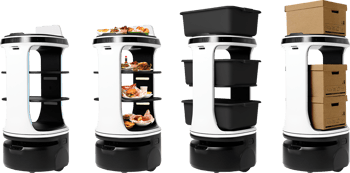Your independent restaurant is on the verge of major growth. Obviously, that’s great news!
But it also means you’re going to need more employees. You’re going to have to train those employees. And as long as your operation is scaling up, you’ll probably want to make sure all of your current employees are up to speed too.
But when is the right time to increase your investment in restaurant staff training? What are the operational signals in other parts of your business that suggest it’s time to level up your training strategy? And how can you make sure that you’re training your current employees in ways that can scale as your business expands?
To find out the answers to these questions and more, we caught up with Sara Delgado, Product Marketing Manager at Opus.
The Connection Between Restaurant Staff Training and Growth
Opus is a mobile app-based platform that provides staff training in restaurants for new hires, ongoing education for employees, and support for task management. Opus uses a mobile app to share educational content, and it uses AI to provide training material in more than 100 different languages.
The average Opus customer runs somewhere between 15 and 20 restaurant locations. But, Delgado suggests, it’s never too early to invest in staff training.
“A well-trained staff makes fewer mistakes,” she explains. “You're mitigating risk in your business. Everything from basic compliance, all the way to ‘Who are you?’ Are your employees ambassadors? Are they sales people for your business?”
Delgado points to the value of a workforce that does the simple things like upselling add-ons and promoting your loyalty program to customers. This is why, she says, “a lot of the training and a lot of the fundamentals should be done early on.”
Pressure Points
Unfortunately, Delgado says, many owners don’t necessarily think about the connection between growth and restaurant staff training until they’re already facing real growing pains. As Delgado notes, “you can only operate one way for so long, until you need to invest in training…but a lot of customers don’t really cross that bridge until they feel like they hit a certain scale.”
Your business is growing and hiring, says Delgado. Meanwhile, you're relying on your employees to help you build out processes in real time. “But,” she warns, “none of this gets documented. None of it gets standardized. And you might be making money. Your business might be growing. But what's also growing in the meantime are those pressure points.”
You may not notice the pressure points when you’re operating at a small scale, “but once you're at, say five operations, maybe across different brands or different styles of service, you really start to feel it.”
Don’t Make Training Your Last Resort
Delgado shares an example from one of her own clients. She recalls a recent conversation with the director of food and beverage for a massive resort.
“I’m in over my head,” he told her. “I didn't realize how much of this was just going to go back to training, but every single problem on my plate right now has a connective tissue, and all of that is training.”
As Delgado points out from firsthand experience, “There's a lot of internal chaos when a customer realizes that they need training.” This is why it’s so important to be proactive about training, even as a small operation.
Investing in Your People
As the owner of a small restaurant or an independent operation, it may be hard to recognize the need for more formal training. You may be operating on razor-thin profit margins. You’re probably spending every minute of your life keeping up with the day to day demands of running a restaurant.
With all of that going on, who has the time or money to invest in a formal L&D (leadership and development) strategy? Well, Delgado offers a counterpoint: “You can't afford to, but you also can't afford not to.”
Whether you operate 1 location or 100 locations, your staff can either be a source of strength or a source of weakness. Delgado explains that “every time you hire a new person, you are essentially adding in a new variable that could either be positive or negative for your business. Training is really there to help them give the guardrails to be a positive influence.”


Subscribe to Our Monthly HR & Staffing Newsletter
Find solutions for hiring, scheduling, and retaining top talent in today's competitive market.
It’s Never Too Early To Formalize Training For Restaurant Staff
Without those guardrails, you make your operation vulnerable to all kinds of mistakes and managerial challenges. Delgado explains that “it could be anything from a food safety violation that costs you thousands of dollars because you got a customer sick, all the way to not having a single shift lead or hourly team member that is ready to become a manager because you haven't been growing their skill set.”
This underscores the importance of establishing a restaurant staff training program that can scale as you grow. Otherwise, you may only be compounding these risks as your business expands.
“Restaurants on the mom and pop side are so used to doing everything so scrappily. And you feel like you know the people that you're working with, so you don't think it's that big of a deal,” says Delgado “But training adds a level of professionalism, it makes your workplace more organized, and it holds people accountable.”
Getting Good ROI From Your Restaurant Staff Training Program
That accountability is vital to getting the best return on your investment (ROI) in your employees. But it’s also an important way of showing your staff members that you’re willing to invest in their career development as well.
For Delgado, the big ROI on formalized restaurant staff training is that it’s a powerful way to recognize and cultivate “the value of every single person that you hire at your business.”
This recognition is critical at a time when so many restaurants are struggling with high turnover, rising recruitment costs, and persistent staffing shortages. Delgado suggests that “a lot of small business owners should ask themselves, ‘Why would I want to work for myself? And how do I get somebody else to care?’”
Adding L&D Software to Your Operation
The key to getting others to care, suggests Delgado, is providing meaningful opportunities for training, learning, and career growth. However, we haven’t always had easy access to technology that can do this effectively and efficiently.
“It's just a very fragmented market with a lot of legacy systems and a lot of old ways of doing things,” says Delgado. “There hasn't been a new product like Opus to really challenge that and also meet the needs of more modern restaurant operators.”
Opus brings online and in-person training tools together on a single, easy-to-use mobile app. These tools are also part of a bigger L&D software package that includes tools for supporting compliance and certification testing for certain food handler roles. Putting these tools together in a single place can speed up, simplify, and streamline training for your restaurant staff.
To learn more about restaurant staff training tech and how you can use the newest generation of tools to support healthy business growth, schedule your personal consultation with one of our experts today!





